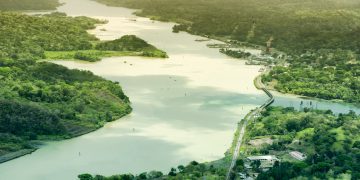Knutsen NYK Carbon Carriers AS (KNCC) and Pace CCS have completed a joint study assessing the viability of Elevated Pressure (EP) CO2 shipping.
As informed, this study explored the benefits of EP shipping compared to other methods, focusing on subjects like corrosion, light ends, and energy efficiency. The study investigated and determined the following regarding the subjects it evaluated:
Corrosion/Erosion
EP shipping provides a greater temperature safety margin than MP and LP from corrosive liquids. EP shipping is significantly less sensitive to corrosion driven by carryover products from the capture process (TEG (Triethylene glycol) or methanol).
Light ends
CO2 carrying capacity in liquid form is heavily influenced by quantities of light ends (such as hydrogen, nitrogen and methane) contained within the CO2. A typical minimum CO2 specification for EP shipping may be 98% CO2, compared with 99.8% or even more restrictive seen for other shipping modes. This flexibility enables simpler, lower cost capture and liquefaction processing facilities.

Energy efficiency
The energy required for liquefying, transport and conditioning for injection were evaluated from post capture for LP, MP and EP. The results show that liquefaction and CO2 handling requirements for EP shipping require up to 50% less energy than MP shipping, and 70% less than LP shipping as CO2 in EP condition has higher enthalpy and much closer to injection conditions.
The following energy requirements were calculated for a typical liquefaction and heating process, as would be needed on an example harbour-to-harbour CCS shipping project: 6 MW/MTPA for EP, 12 MW/MTPA for MP, and 21 MW/MTPA for LP.
Elevated Pressure CO2 shipping is a no-brainer for many, if not most, CCS projects. EP shipping can offer safer, lower cost, low complexity CO2 shipping operations. The results of this study offer further support to our independent recommendation to consider EP shipping on many CCS projects around the globe.
… said Matthew Healey, CEO of Pace CCS. Meanwhile, Oliver Hagen-Smith, CEO of KNCC stated that this Study provides the confidence that EP shipping, generally, may accept CO2 from any capture facility without need for removal of components, being that light ends or those generating adverse chemical reactions.



































































